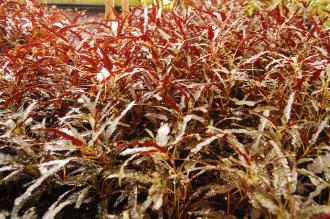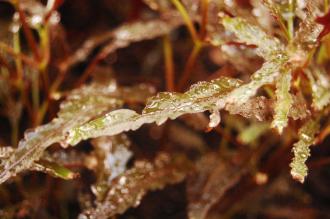
Hemigraphis repanda (16/01/2016, Kew Gardens, London)
Position: Indirect bright to medium light
Flowering period: Early spring
Soil: Moist, well drained
Eventual Height: 15cm
Eventual Spread: 50cm
Hardiness: 10b, 11, 12
Family: Acanthaceae
Hemigraphis repanda is a slow growing tropical evergreen perennial with a spreading, groundcover habit. Its dark purple/ black leaves are linear with irregular margins, up to 10cm long and 1cm across. Its leaf color varies from dark purple to dark green depending on the light this plant receives. Its white flowers are small and appear terminally.
Hemigraphis repanda, commonly known as Dragon’s Tongue or Narrow Flame Leaf Ivy, is native to Malaysia. In its native habitat it grows as a tropical woodland understory plant.
The etymological root of the binomial name Hemigraphis is derived from the Greek hmi meaning ‘half’ and grafis menaing ‘stilus’. Repanda is derived from the Latin repandum menaing ‘spreading out’.
The landscape architect may find Hemigraphis repanda useful as a groundcover evergreen foliage plant suitable for internal planting schemes with bright to medium indirect light.
Ecologically, Hemigraphis repanda is attractive to some pollinating insects.

Hemigraphis repanda Leaf (16/01/2016, Kew Gardens, London)
Hemigraphis repanda prefers moist, humus rich, well-drained soils. It tolerates most pH of soil, although it prefers a slightly acidic pH.
When maintaining Hemigraphis repanda as a houseplant its soil should be watered regularly, but never wet. Watering should be reduced during the winter months. Its preferred active growing temperature rages from between 16ºc to 24ºc. Feeding with weak fertiliser solution should be carried out once a month during the growing season. This plant may be misted with water to improve its humidity.

Landscape Architecture

